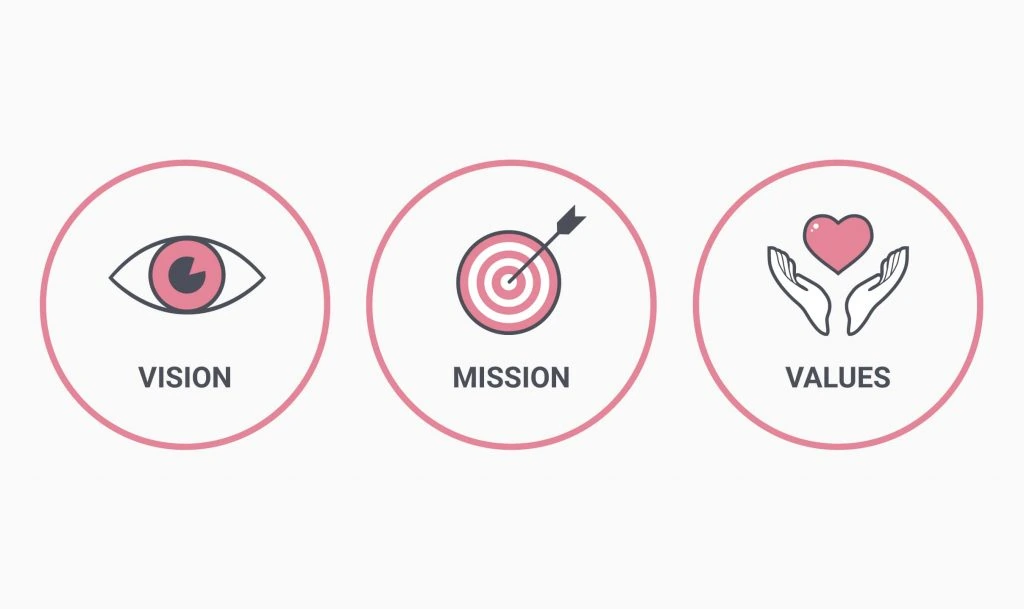Crafting an Impactful Branding Statement (With Examples)
A branding statement is critical to building a recognisable and memorable brand. This concise phrase encapsulates the essence of your business, communicating who you are, what you do, and why it matters. An effective branding statement is invaluable for conveying what sets you apart from customers, guiding internal decisions, and aligning marketing efforts.
But with many possible approaches, where do you start? And what makes for an impactful branding statement that resonates? This comprehensive guide examines a branding statement, why it’s vital for businesses, and – most importantly – how to craft one that captures attention.
- A branding statement defines your business, highlighting its objectives, values, and uniqueness.
- It enhances strategic, consumer, and internal clarity, aligning teams and attracting customers.
- Effective branding statements are succinct, clear, and memorable, using emotive language.
- Regularly review your statement to ensure it reflects your evolving brand essence.
- What Exactly is a Branding Statement?
- Why Does Your Brand Need a Branding Statement?
- How to Write a Branding Statement That Resonates
- 15 Key Ingredients for an Attention-Grabbing Branding Statement
- Structuring Your Brand Statement
- Common Brand Statement Mistakes to Avoid
- Bringing It All Together: Craft, Revise, Embed
- 10 Brand Statement Examples from Leading Companies
- Turning Your Branding Statement Into A Mantra
- 5 FAQs Around Creating A Branding Statement
- In Closing
What Exactly is a Branding Statement?

A branding statement, or brand statement, briefly describes a business that identifies its objectives, values, and competitive advantages. It conveys the uniqueness of a brand and emphasises what sets it apart from rivals.
Key Elements
- Succinct: Usually a sentence or two, rarely more than a paragraph
- Personality: Convey's brand identity and style
- Clarity: States what the brand does, who it serves, and why it's better/different
- Memorable: Uses emotive language and impactful messaging
- Consistent: Aligns with visual identity and broader branding
Examples of Strong Branding Statements
- Nike: “To bring inspiration and innovation to every athlete* in the world.” *If you have a body, you are an athlete.
- Coca-Cola: “To refresh the world in mind, body and spirit and inspire moments of optimism and happiness through our brands and actions.”
- Apple: “We believe technology can serve humanity's deepest values and highest aspirations.”
Whilst diverse in their messaging, they all communicate brand values alongside what the company does eloquently and memorably. This clarity of mission resonates internally and externally.
Why Does Your Brand Need a Branding Statement?
With an endless choice facing modern consumers, a strong branding statement is essential for making your business stand out. But beyond differentiation, an impactful brand statement delivers value across several key areas:
1. Strategic Clarity
- Unifies teams behind shared mission and purpose
- Focuses efforts on core brand identity and goals
- Guides decision-making for new initiatives and campaigns
- Aligns communication and design with consistent identity and tone
2. Consumer Clarity
- Enables understanding of what you do, why it matters, and who you help
- Communicates differentiation – why choose you over alternatives?
- Crafts a recognisable identity consumers relate to
“64% of customers will switch brands for one with greater purpose.” – Edelman Trust Barometer
This clarity amplifies marketing efforts by crafting consistent and compelling messaging.
3. Internal Clarity
- Attracts top talent who connect with mission and purpose
- Boosts employee pride, engagement and motivation in the brand
- Fosters strong culture and community
“Employees who find their company's purpose meaningful are 5x more productive.” – Imperative.
Aligning teams with a shared vision pays dividends.
Whilst often overlooked by startups and small businesses, the branding statement packs immense value. As a guiding focal point influencing many areas, the ROI of crafting one thoughtfully makes it indispensable.
How to Write a Branding Statement That Resonates

We've covered what a branding statement is and why it matters – now, let's examine how to write one that captivates attention. With many approaches to choose from, where do you start?
Follow this 7-step formula for crafting a memorable brand statement that makes an impact:
Step 1: Identify Your Target Audience
Be specific – who are your ideal customers and clients? Understand their needs, challenges, values and characteristics. This clarity lets you directly speak to what matters most in your messaging.
Step 2: Define Your Customer Promise
What is the experience or outcome you provide customers? Do you promise convenience, quality, a community, or status? Make sure it addresses audience needs and differentiates from competitors.
Step 3: Convey Your Personality
Communicate your identity through emotive descriptors – are you bold, caring, innovative, or dependable? Ensure messaging aligns with visual identity and broader brand presentation.
Step 4: State What You Do
Briefly explain what products, services or solutions you offer. Focus on category rather than specifics – e.g. We make communication software for teams rather than we make video conferencing and task management tools.
Step 5: Distill Your Differentiation
What makes you unique? Why choose you over another provider? State your ‘killer difference' – a critical competitive advantage or USP you want to be remembered.
Step 6: Specify Your Impact
Quantify your benefits – how you improve people's lives or businesses. This grounds your promise in real value that customers care about.
Step 7: Review and Refine
Check that your statement flows logically, keeps to 2 sentences or less, and effectively communicates your brand essence. Say it out loud – does it capture attention?
Walk through each consideration intentionally, refining the statement until it is concise and impactful. This 7-step technique allows you to laser focus on what truly matters.
15 Key Ingredients for an Attention-Grabbing Branding Statement

Beyond the process, you can optimise potency through specific messaging elements. Whilst worrying about every detail can paralyse efforts, intentionally incorporating the following will elevate engagement:
1. Emotive Language
Research shows emotional resonance amplifies brand recall by 2.5x. Use vivid language, analogies and wit strategically.
2. Quantified Benefits
Substantiate your promise with numbers – this grounds statements in real value for customers.
3. Active Verbs
Convey passion and motion – change, improve, empower, accelerate etc. This infuses vibrancy.
4. Rhetorical Questions
Prompt imagination with a thought-provoking question. This intrigues readers to learn more.
5. Uncommon Words
A touch of eloquent vocabulary demonstrates thoughts and care put into messaging whilst avoiding over-complication.
6. Surprising Comparisons
Craft unexpected associations between unlike things through analogy or metaphor to capture attention.
7. Repetition
Re-stating a keyword or phrase drills home core messaging for recollection.
8. Specificity
Avoid generic claims by getting specific on audience, promise and differentiation. Who, what and why details make statements tangible.
9. Rhyme
A subtle rhyming device sticks in minds better through phonetic harmony.
10. Contrasting Elements
Combine complementary opposites – soft yet firm, elegant yet bold. This adds intrigue.
11. Evocative Imagery
Paint a vivid hypothetical scenario where you fulfil the audience's hopes and dreams.
12. Audience-Centric
Speak directly to customer concerns, values and viewpoints through a second-person voice.
13. Tone Consistency
Messaging, visuals and culture should reinforce positioning rather than dilute it.
14. Conversational Voice
Avoid stiff corporate jargon – would you say this to a friend to pique interest?
15. Memorable Rhythm
Statements resembling a catchy song refrain have greater mental adhesion.
Whilst hitting every technique may result in an overloaded Franken statement, incorporating several thoughtfully elevates engagement and recall.
Structuring Your Brand Statement

Now we understand vital ingredients, how do we structure all this effectively?
Two proven templates provide ideal flow and emphasis:
The ABC Brand Statement Formula
Audience. Benefit. Concept.
A – Who are you talking to? Identify niche audience and segment.
B – What’s the tangible takeaway, outcome or feeling you provide this audience?
C – What’s your unique way of achieving this benefit? Your differentiator.
Example:
[Entrepreneurs] save 5+ hours a week [with our AI assistant automating admin tasks.]
The Brand promise Formula
Promise. Proof. Purpose.
P1 – Lead with your aspirational brand promise central to positioning
P2 – Provide evidence proving you deliver with examples and stats
P3 – End by conveying a higher purpose beyond profit that guides you
Example:
[We promise efficiency without losing personalisation.] 95% of our clients achieve 20% sales increases in under three months [because each person deserves to be treated with care and dignity in our technological age.]
Whilst either structure works well, the Promise Formula propels messaging with an aspirational opening line before substantiating. This compels the reader's curiosity.
When structuring statements, lead with your differentiation and quantify benefits for traction—end by conveying purpose for an impactful flourish.
Common Brand Statement Mistakes to Avoid
Your central messaging deserves thought and finesse. Costly mistakes compromise potency and must be avoided.
1. Generic Claims Lacking Detail
Vague statements full of buzzwords but short on specifics fail to clarify why you matter. Get precise with audience, promise and differentiation details.
2. Overcomplicated Messaging
Long-winded statements try accomplishing too much whilst losing focus. Pare back only vital elements communicating brand essence.
3. Misalignment With Positioning
Straying from visual identity or marketing creates disjointed experiences, diluting the resonance of messaging.
4. OverUSED Industry Jargon
Lazy terms used by all competitors leave statements feeling derivative rather than unique.
5. Not Infusing Brand Personality
Soulless statements only focus on rational benefits and lack emotional bonding opportunities with readers.
6. Not Quantifying Claims
Failing to include measurable achievements leaves bold claims unconvincing to customers.
7. Passive or Impersonal Tone
Forging a connection with readers requires conveying passion and talking directly to them.
8. Glaring Grammatical Errors
Sloppy mistakes undercut professionalism and thought leadership brand building.
Bringing It All Together: Craft, Revise, Embed
With many integral ingredients covered, elegantly weaving them into something concise yet compelling requires iteration.
Craft: Play with structures and word arrangements conveying your essence.
Revise: Refine mercilessly to communicate things clearly in the least words possible.
Embed: Integrate into sites, presentations & employee training so messaging takes root.
10 Brand Statement Examples from Leading Companies
Now, look at ten excellent brand statement examples from prominent companies. Observing common elements like purpose, personality, differentiation, and emotion as you read them. See how these statements capture the core identity and positioning of brands you know.

1. Disney
“To entertain, inform and inspire people around the globe through the power of unparalleled storytelling.”
Disney puts storytelling front and centre in its brand statement. This speaks to its heritage in animated films and other entertainment that captivates imaginations. Terms like “entertain,” “inspire,” and “unparalleled” convey passion and excellence. The focus on reaching a global audience signifies Disney’s worldwide fanbase and globalised content.
Key Takeaway: Leverage your origin story in your brand statement. If you have a unique history infused into your company's DNA and culture, let that shine through.
2. Southwest Airlines
“To connect people to what's important in their lives through friendly, reliable, and low-cost air travel.”
Right from the start, Southwest tells you what segment of the airline industry it focuses on low-cost travel. It then wraps that with a higher emotional and personal purpose: connecting people to important things and people in their lives. This statement exudes the approachable, people-centric personality Southwest is known for in a commodity business.
Key Takeaway: Infuse emotional benefits and personality into your brand statement to stand out from competitors.
3. Patagonia
“Patagonia is in business to save our home planet.”
You can’t get much more precise than this brand statement. Rather than general platitudes about quality or value, Patagonia stakes out a bold social mission tied directly to its environmentally-friendly clothing and gear. Two things stand out: an apparent reason for being and an ambitious goal. This gives unmistakable direction to corporate strategy and operations.
Key Takeaway: Don’t be afraid to take a strong stand in your brand statement if it aligns with your values. Customers, employees and partners will take note.
4. Apple
“To contribute to the world by making tools for the mind that advance humankind.”
Apple’s iconic co-founder Steve Jobs distilled the company’s purpose into a short, stirring, romantic, business-smart statement. It declares Apple’s commitment to building exceptional products (“tools for the mind”) that empower people and push society forward. This shows how leading brands articulate grand visions like Patagonia's brand statement.
Key Takeaway: Think big in your brand statement. What change would you like your business to create over the long term?
5. Ikea
“To create a better everyday life for many people.”
Ikea often gets touted for championing accessibility, sustainability, and affordability in home furnishings. Its simple brand statement says as much. Even the wording “many people” suggests democratising stylish furniture for the masses. Like Southwest’s statement, Ikea declares its purpose and then layers its personality by promising to brighten customers’ lives.
Key Takeaway: Probe how your product benefits daily life for many types of people. Can you make those emotional and social rewards shine through?

6. Nike
“To bring inspiration and innovation to every athlete in the world.”
In two lines, Nike fuses its competitive personality with an aspirational purpose centred around athletes. Even if you’re not an athlete, terms like “inspiration” and “innovation” create intrigue and allure. The ambitious scale of “every athlete in the world” compounds that effect. This statement clicks with what makes Nike engaging: pursuing athletic greatness.
Key Takeaway: Zoom in on your core customer, then define how you help them reach their potential. Make it stirring.
7. Starbucks
“To inspire and nurture the human spirit – one person, one cup and one neighbourhood at a time.”
Starbucks paints coffee drinking as personal and uplifting. The phrase “nurture the human spirit” casts Starbucks cafes almost as cultural sanctuaries where people treat themselves and ponder life’s big questions. This airy statement floats nicely over the reality that Starbucks's growth depends on intelligent real estate and strategic acquisitions.
Key Takeaway: Don’t be afraid to romanticise your customers’ relationship with your product, especially if you provide moments of daily escape.
8. Tesla
“To accelerate the world’s transition to sustainable energy.”
Like Patagonia and Apple, Tesla’s brand statement specifies a values-driven corporate mission with global scaled impact. This sets an expectation that Tesla isn’t just trying to sell cars; it intends to spearhead an environmental revolution. The practical effect is that Tesla owners and investors signal their green credentials by associating with the brand.
Key Takeaway: Take a stand on social or environmental issues if doing so attracts the right customers and talent.
9. Airbnb
“Belong anywhere.”
Airbnb’s brand statement suggests both travel and human connection. Two words eloquently capture Airbnb’s aspiration of helping people feel at home wherever they go. This stirs a sense of possibility yet comfort. Contrast this with hotel chain statements that emphasise real estate footprints and loyalty programs.
Key Takeaway: Boil down your competitive differentiation and emotional benefit to a concise phrase that sticks.
10. Amazon
“Work hard, have fun and make history.”
You might be surprised to see Amazon founder Jeff Bezos's famous internal motto in this list. But look closer, and you’ll notice it captures several brand dimensions. “Work hard” signals Amazon’s customer obsession and growth engine. “Have fun” references innovation and spirit. And “make history” tied to Amazon’s continual disruption of industries.
Key Takeaway: Express your culture, values and ambition in a short, memorable phrase employees and customers can rally around.
Turning Your Branding Statement Into A Mantra

The litmus test for a great brand statement? When teams effortlessly quote it from memory like a mantra in perfect alignment with strategy.
Achieving this involves:
- Condensing into sticky soundbites under ten words
- Repetition across touchpoints
- Infographics conveying key messages visually
- Staff incentives for correctly recalling a statement
- Internal poster display
Take your statement from an abstract concept to a concrete grounding force across the organisation. Craft succinct slogans derived from its essence, too.
5 FAQs Around Creating A Branding Statement
We’ve covered a lot of ground, but several questions around crafting a robust statement regularly arise:
How Long Should Our Branding Statement Be?
There is no official rule, but between 1-3 sentences or under 25 words allows crisp conveyance without dilution—any longer risks convoluted communication.
Do We Need A Tagline And Statement – What’s The Difference?
Your brand statement summarises what your brand stands for. Your tagline is a snappy subset conveying your key differentiation or benefit promise even more briefly.
What Makes A Strong Brand Statement?
Clarifies who you serve
Quantifies tangible benefits
Explains key differentiation
Adopts consistent personality and tone -aligns with a more comprehensive brand identity
When Should We Create Our Brand Statement?
Ideally, it should be early in the brand-building process before going to market so it steers all activities coherently rather than getting bolted later.
How Often Should We Review And Refresh Our Statement?
Aim for annually to ensure it accurately encapsulates brand essence as you grow and avoid divergence. Significant pivots also call for re-alignment.
In Closing
A strong branding statement crystallising why you matter is invaluable, yet many businesses never define one. Don’t miss out on immense clarity and amplification opportunities. Whether an early-stage startup or a 100-year brand, this guides communication, unifies teams and attracts customers.
Now the foundations are built, craft and experiment enthusiastically with messaging Arrangements until you resonate powerfully with your audience and convey differentiation. When embedded organisation-wide, a memorable mantra emerges to guide strategic growth.
Your central brand essence deserves thoughtful articulation – let this be the year it finally takes shape within an engaging statement.

